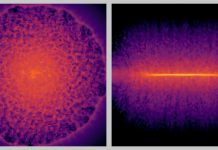
Scientists have long known that a star’s magnetic activity—responsible for dramatic flares, sunspots, and energetic outbursts—is linked to how fast the star spins.
Generally, faster spinning stars show stronger magnetic behavior, but only up to a certain point.
After reaching that limit, the magnetic activity levels off, a phenomenon known as “saturation.”
However, a new study led by Dr. Jie Yu from the Australian National University has found that this rule doesn’t always apply—especially when it comes to stars that orbit in close pairs, known as “close binary systems.”
These are systems where two stars orbit each other at extremely short distances.
Using data collected by two powerful telescopes—China’s LAMOST telescope and Europe’s Gaia space observatory—Dr. Yu and her team discovered that many of these closely orbiting stars show far more magnetic activity than expected.
In fact, instead of their activity leveling off as predicted, it keeps increasing in many cases.
Even more intriguing is what happens when the stars spin extremely fast—completing an orbit in less than half a day. In these rare cases, their magnetic activity actually starts to decline, a puzzling effect called “supersaturation.”
This decline goes against everything scientists thought they knew about how spinning affects magnetic strength.
The researchers believe tidal forces—gravitational interactions between the two stars—are at the heart of this strange behavior. These forces likely affect how the stars rotate and influence their magnetic fields in ways that don’t happen in single stars. Essentially, being so close to another star may twist or boost their magnetic energy beyond the normal rules.
This discovery isn’t just interesting for astrophysicists—it could have broader implications. Magnetic activity affects the space environment around a star, which in turn influences the potential habitability of any surrounding planets.
If a planet orbits one of these unusually active stars, its atmosphere might be bombarded by strong radiation and charged particles, which could impact its chances of supporting life.
Dr. Yu’s study opens up new questions about how stars evolve and how their relationships with other stars can change their behavior. It also shows that the universe still holds many surprises—even in places we thought we understood.
The findings were published in Nature Astronomy and are helping astronomers better understand the hidden dynamics of stars that live in close company.



